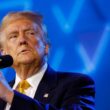Top 5 Trending Global Business Headlines
1) Samsung’s Profit Recovery Faces Challenges in Q3
Samsung Electronics is set to report a more than four-fold increase in quarterly profit on Tuesday, buoyed by improved demand for chips. However, the pace of this recovery appears to be faltering as the company struggles to capitalize on the growing artificial intelligence (AI) market.
Analysts from LSEG SmartEstimate predict that Samsung, the world’s leading manufacturer of memory chips, smartphones, and TVs, will record an operating profit of 10.33 trillion won ($7.67 billion) for the quarter ending September 30. This figure represents a significant increase from 2.43 trillion won a year ago, but reflects little change compared to the previous quarter’s profit of 10.44 trillion won.
The global semiconductor market has begun to recover from last year’s downturn, primarily driven by demand for chips used in AI servers. However, analysts note a slowdown in the recovery of conventional chips utilized in smartphones and PCs.
Samsung is racing to catch up with smaller competitors, such as SK Hynix, in supplying high-end AI chips to companies like Nvidia. The company is also facing heightened competition from Chinese rivals in the commodity chip market.
While Samsung’s chip division is expected to swing to an operating profit of 5.5 trillion won from a year earlier, this figure represents a 15% decline from the previous quarter. This decline is partly attributed to Samsung setting aside provisions for employee bonuses, according to estimates from ten analysts compiled by Reuters.
Analysts point out that Samsung’s slow entry into the higher-margin AI chip market, along with its greater reliance on China and traditional mobile chips compared to its peers, leaves it more exposed to geopolitical risks and weak demand.
“Samsung is more likely to lose its position as the number one DRAM vendor in the event of a softer commodity DRAM market,” said Daniel Kim, an analyst at Macquarie Equity Research. He noted that the ongoing supply glut in conventional DRAM chips would likely impact Samsung more severely than SK Hynix.
This sobering forecast comes on the heels of Micron’s recent announcement, which forecasted first-quarter results exceeding Wall Street estimates and reported its highest quarterly revenue in over a decade due to soaring demand for AI-related memory chips.
In addition, analysts suggest that Samsung’s non-memory chip division—comprising chip design and contract manufacturing—continued to incur losses in the third quarter as it struggles to compete with market leader TSMC, which counts Apple and Nvidia among its key customers.
Amid these challenges, Samsung has reportedly begun cutting up to 30% of its overseas workforce in certain divisions, indicating the difficulties the company faces. Analysts also predict disappointing sales for Samsung’s premium foldable phones, as it contends with increasing competition from Chinese rivals like Huawei.
According to estimates compiled by Reuters, Samsung’s mobile phone and network businesses are expected to report an operating profit of 2.6 trillion won in the third quarter, down one-fifth from the same period last year.
Samsung Electronics shares fell 23% so far this year, lagging SK Hynix’s 23% rise.
The South Korean firm will announce its preliminary third-quarter earnings on Tuesday before reporting full figures later this month.

2) Japan’s Top Currency Official Issues Caution as Yen Weakens
Japan’s leading currency diplomat issued a warning on Monday against speculative trading in the foreign exchange market as the yen fell below 149 per dollar. “We will monitor currency market movements, including speculative trading, with urgency,” said Atsushi Mimura, echoing the verbal warning tactics often used by his predecessor, Masato Kanda.
Katsunobu Kato, the newly appointed finance minister, also weighed in, stating that the government would closely observe rapid currency fluctuations and would take necessary action if needed. “The government will evaluate what measures should be implemented while monitoring the impacts,” Kato mentioned in an interview with a select group of reporters.
On Monday morning, the yen traded at 149.10 against the dollar, marking its weakest point since August 16, following a stronger-than-expected U.S. jobs report for September, which led traders to reduce their expectations for significant interest rate cuts by the Federal Reserve.
Japan last intervened in the currency market to support the yen in late July, when it had fallen to a 38-year low below 161 per dollar. The yen has faced mounting pressure since new Prime Minister Shigeru Ishiba surprised markets by stating that the economy was not ready for further interest rate hikes, seemingly contradicting his earlier support for the Bank of Japan’s (BOJ) gradual shift away from long-standing loose monetary policy.
In the same interview, Kato indicated that the government would defer specific policy decisions to the BOJ when asked whether the policy rate should remain at 0.25%. “The government hopes that the BOJ will effectively communicate with the markets and adopt appropriate policies to achieve its 2% inflation target sustainably and stably,” he said.
In March, the BOJ raised interest rates for the first time in 17 years, citing evidence that Japan was finally moving away from its long-standing deflationary mindset. The central bank surprised markets again with a rate hike in July, causing significant turbulence in domestic markets.
Japan’s top currency diplomat on Monday issued a warning against speculative moves on the foreign exchange market as the yen fell below 149 per dollar.
“We will monitor currency market moves including speculative trading with a sense of urgency,” Atsushi Mimura told reporters, reviving a verbal warning tactic that his predecessor, Masato Kanda, frequently used.
Separately, Katsunobu Kato, the nation’s newly appointed finance minister, said the government would monitor how rapid currency moves could potentially impact the economy and would take action if necessary.
“The government will consider what action should be taken while monitoring the impacts,” Kato said in an interview with a small group of reporters on Monday.
The yen depreciated to 149.10 versus the dollar in early trading on Monday, the weakest since Aug. 16, after a surprisingly strong U.S. jobs report for September led traders to cut bets that the Federal Reserve will make further large interest rate cuts.
Japan last conducted yen-buying intervention in late July to support its currency after it tumbled to a 38-year low below 161 per dollar.
The yen has also been under pressure since new Japanese premier Shigeru Ishiba stunned markets when he said the economy was not ready for further rate hikes, an apparent about-face from his previous support for the Bank of Japan’s unwinding decades of loose monetary policy.
In Monday’s interview, Kato said the government would leave specific policy steps to the Bank of Japan (BOJ), when asked whether the policy rate should be maintained at 0.25%.
“The government hopes that the BOJ will communicate with markets thoroughly and take appropriate policy to achieve its 2% inflation target in a stable and sustainable manner,” he said.
The BOJ in March delivered its first rate hike in 17 years, arguing the pace of price and wage increases showed Japan was finally shaking its entrenched deflationary mindset. The central bank unexpectedly increased rates again in July, triggering a shakeout in domestic markets.
3) Oil Prices Decline Following Strongest Weekly Surge in Over a Year
Oil prices experienced a decline on Monday after marking their largest weekly increase in over a year last week. Concerns about oversupply, coupled with weaker demand, outweighed fears of a broader Middle East conflict disrupting exports from the key producing region.
As of 0435 GMT, Brent crude futures dropped by 31 cents, or 0.4%, settling at $77.74 per barrel. Meanwhile, U.S. West Texas Intermediate (WTI) crude futures fell by 20 cents, or 0.27%, to $74.18 per barrel.
Last week, Brent crude surged more than 8%, the most significant weekly gain since January 2023, while WTI rose by 9.1%, marking its largest weekly increase since March 2023. These gains were fueled by speculation that Israel might target Iranian oil infrastructure in response to an Iranian missile attack on October 1.
However, as developments regarding Israel’s response continue to unfold, many investors opted to sell futures to secure profits from the prior week’s rally. “Technical profit-taking appears to be the most reasonable explanation for the softening of oil prices today,” stated Priyanka Sachdeva, a senior market analyst at Phillip Nova.
Despite this dip, oil markets are expected to face upward pressure due to concerns over potential Israeli retaliation against Iran. The looming possibility of a significant escalation in the Middle East conflict has countered the increasing pressures on demand, according to Sachdeva.
On Sunday, Israel conducted airstrikes against Hezbollah targets in Lebanon and the Gaza Strip, marking the one-year anniversary of Hamas’ October 7 attacks that ignited the current conflict involving Iranian-backed militant groups. The Israeli defense minister has indicated that all options remain open for retaliation against Iran.
In response to the escalating tensions, ANZ Research noted on Monday that, despite last week’s oil price rally, the conflict’s impact on oil supply is expected to be minimal. “We consider a direct assault on Iran’s oil facilities to be the least likely scenario among Israel’s options,” the report stated. “Furthermore, the influence of geopolitical events on oil supply has diminished in recent years, resulting in a significantly reduced geopolitical risk premium in oil markets. Additionally, OPEC’s spare capacity of 7 million barrels per day provides an essential buffer.”
The Organization of the Petroleum Exporting Countries (OPEC), along with allies such as Russia and Kazakhstan (collectively known as OPEC+), has maintained substantial spare capacity by cutting production in recent years to support prices amid lackluster global demand. Analysts believe that OPEC+ has enough spare capacity to offset a complete loss of Iranian supply if Israel were to attack, though complications could arise if Iran retaliates against the facilities of Gulf neighbors.
During its last meeting on October 2, OPEC+ decided to keep its oil output policy unchanged, which includes plans to begin increasing production in December. With uncertainties surrounding the pace of economic recovery in major crude importer China, the planned production hike could help shield the market from supply disruptions while continuing to limit upward pressure on oil prices, according to Phillip Nova’s Sachdeva.

4) Dollar Maintains Gains from U.S. Jobs Data and Middle East Tensions
The dollar continued to strengthen following a robust U.S. jobs report for September, which indicated the largest increase in employment in six months, a decline in the unemployment rate, and solid wage growth. These indicators point to a resilient economy and have prompted markets to reassess their expectations for Federal Reserve rate cuts.
Chris Weston, head of research at Australian online broker Pepperstone, commented, “With rate cuts still the default expectation, combined with optimistic earnings forecasts and China ramping up liquidity and fiscal measures, both the equity bull case and the U.S. dollar receive a boost.” He added that while geopolitical tensions and the potential for an energy supply shock continue to pose risks to market sentiment, investors holding riskier assets remain optimistic heading into the new trading week.
The dollar index, which measures the currency against major peers, was steady, having risen 0.5% on Friday to reach a seven-week high. This marked over a 2% gain for the week, the largest increase in two years. The euro traded at $1.0970, down 0.06%.

5) China’s Gold Reserves Remain Unchanged for Fifth Consecutive Month
China’s central bank did not increase its gold reserves for the fifth month in a row in September, as reported on Monday. This pause is primarily attributed to a rise in gold prices. As of the end of September, China’s gold holdings remained at 72.8 million troy ounces, but the value of these reserves increased to $191.47 billion from $182.98 billion at the end of August.
Gold prices have surged approximately 28% this year, on track for the largest annual gain in 14 years, supported by anticipated Federal Reserve interest rate cuts, escalating geopolitical tensions, and strong demand from central banks.
According to the World Gold Council, global central banks, which were active buyers of gold in 2022-2023, are expected to reduce purchases in 2024 compared to 2023 while maintaining levels above those seen prior to 2022. This shift is partly due to the People’s Bank of China (PBOC) pausing its gold purchases after buying for 18 consecutive months until May.
The PBOC was the largest official buyer of gold in 2023, and its decision to halt purchases has dampened Chinese investor demand in recent months. WisdomTree commodity strategist Nitesh Shah noted, “With higher gold prices, the PBOC is taking a break from new purchases. We believe the central bank would like to acquire more gold but is waiting for a more favorable entry point.”
He added, “However, with global interest rates declining and geopolitical tensions increasing, the PBOC may have to wait a while for a price dip. Given our forecast of prices reaching over $3,000 per ounce in the coming year, the central bank may want to consider positioning itself sooner rather than later.”










